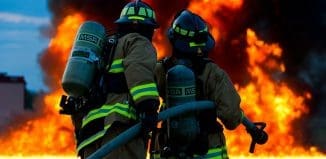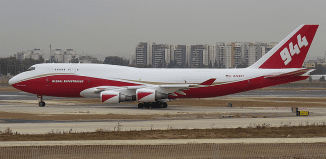Fire Fighting Chief: “We’ve Improved Significantly”
This post is also available in:  עברית (Hebrew)
עברית (Hebrew)

“When it comes to fire fighting, the name of the game is quick response. The quicker you reach a fire location, the more you can minimize the damage. Over the past couple of years there’s been an intense effort to shorten response times and bring them up to European standards. In the past our response was slower than the norm, but now it’s much quicker, especially in urban areas, with more fire fighters involved in each incident.”
This according to Fire Fighting and Rescue Authority Chief Shahar Ayalon, in an interview to iHLS. We spoke with Ayalon at his offices in the authority compound in central Israel, a large area which includes the fire fighting academy, various incident control rooms and a modest exhibition of fire fighting vehicles from the past.
The tragic Carmel fire was a turning point for fire fighting in Israel. Everything has changed since then. Ayalon said that the system still exhibits some growing pains: An array of 24 municipal unions now under a single management, with the same uniforms, equipment, procedures, training, dress code, all under the authority of the Civil Service Commission: An entirely new world.
You can already see the results. Quick response means, in addition to a high professional level of operations, additional budgets, manpower and stations. The current long term plan includes the addition of 40 new stations within five years. Today there are 110 stations around Israel, with 225 stations planned by 2030. The authority also recruited new workers and received new responsibilities.
Shahar Ayalon: “We received all hazardous material disposal responsibilities from the Environmental Protection Ministry. This included expert chemists who were passed over to us along with their 16 vehicles. We now deal with hazardous material disposal, including pesticide and cooking gas, on behalf of the IDF, the police and the prison service.
The IDF’s Home Front Command gave us their 2,000 military reserve personnel. We train them and store their equipment. They’re a serious force multiplier.
We also received additional legal authority. Today a district commander can shut down an establishment if all the necessary fire safety requirements aren’t met. The commander can shut the place down twice, for 30 days at a time, following a hearing.
In addition to our 1,800 professional fire fighters we have 1,000 volunteers, including some units comprised of various minorities. When all the planned fire fighting stations are in place, by 2030, 80% of Israelis will enjoy a full fire fighting service, meaning optimal response times. In more remote locations volunteers will be in charge of first response until the fire fighters arrive.
IHLS – Israel Homeland Security
Search and rescue: 24 search and rescue units have been established throughout Israel. These are teams of experts specializing in rescuing people from accidents and falls. They have training in climbing, using zip lines, lowering stretchers from roofs and operating heavy rescue vehicles.”
Ayalon is especially proud about the way the fire fighting profession has changed over the last couple of years. A tour of the fire fighting authority clearly reveals a sense of professional pride. Personnel wear uniforms, ranks, unit insignia. Some wear work overalls. Vehicles and equipment are more advanced and the entire system is reaching the European standard. The basic fire fighting training course lasts six months, with the last month devoted to practical work in one of the stations. Cadets receive an 8,000 NIS monthly salary. After two years a fire fighter gets a permanent posting in the authority, being eligible for the team commanders course after four years. 4,000 people wanted to enter the recent basic training course, only 100 were accepted following a strict screening process. Most cadets were combat officers in the IDF, some with academic degrees. The average age for cadets is 22-27. The physical fitness trials are especially difficult.
Shahar Ayalon: The profession underwent a significant improvement process. Today salaries are good, there’s plenty of free time for studies since fire fighters work in shifts (24 hours at work, 48 hours at home). Our feedback indicates the profession is highly demanded, with fire fighters considered brave and dedicated. These qualities attract those who served in elite military units.”
Technology is improving as well. There are no robotic fire fighters yet, but teams have thermal cameras capable of detecting trapped casualties through flames and smoke. Temperature sensors help fire fighting teams plan the best approach to fire centers.
40,000 fires are recorded annually in Israel, in addition to 40,000 rescues. Part of the work is done by the airborne fire fighting wing, using 8 “air tractor” airplanes capable of carrying up to 3 tons of water per approach. By 2015, according to plans, the wing will include 14 planes and four helicopters. The fire fighting authority also uses police surveillance aircraft. Past experience taught Israeli first responders that a robust communication system between police, fire fighters and others is an absolute necessity.
The fire fighting authority’s central command is an impressive, new facility, controlling all national fire and rescue response efforts. It includes various communications and control equipment, maps and cameras, all facilitating quick response to emergency calls.
The command center includes, in addition, one remarkable innovation: A fire prediction program. When a large fire breaks out the program quickly analyzes its pattern, taking various parameters into account: Weather, ground cover, wind direction, rain, humidity and more.
Shahar Ayalon: “I keep repeating one mantra over and over: Our goal is saving lives. Property is less important, we look for ways to save and rescue the people.”





























